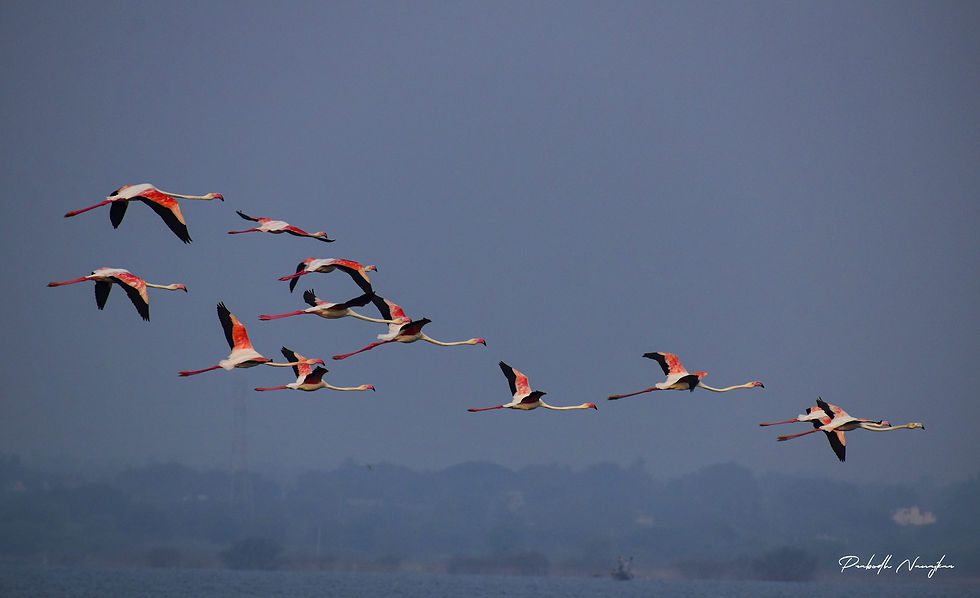About Flamingos in India: Pink Wonders of Wetlands and Migration Marvels
- Prabodh Nanajkar

- Apr 9, 2023
- 2 min read
Flamingos are among the most distinctive and recognizable bird species, known for their vibrant pink feathers and long, slender legs. India is home to two species of flamingos - the greater flamingo and the lesser flamingo. These birds can be found in a variety of habitats, including salt pans, lagoons, and estuaries.

Habitat: Greater flamingos are commonly found in coastal regions and wetlands, while lesser flamingos are found in shallow, brackish lakes and wetlands. Flamingos are social birds and live in large flocks, sometimes numbering in the thousands.
Behavior: Flamingos are filter feeders, and their unique beaks are designed to help them sift through mud and water to extract food. Their diet mainly consists of algae, shrimp, and other small aquatic creatures. Flamingos are also known for their unique mating rituals, which involve synchronized displays of dancing and vocalizations.
Migration: Flamingos are migratory birds, and they travel great distances in search of food and breeding grounds. In India, flamingos migrate to various regions depending on the season. During the winter months, large flocks of flamingos can be seen in Gujarat, Maharashtra, and Andhra Pradesh. In the summer months, flamingos migrate to the Rann of Kutch and other regions in search of breeding grounds.
Facts:
The pink color of flamingos comes from the pigments in the algae and other organisms they consume.
Flamingos can live up to 20 to 30 years in the wild.
Flamingos are monogamous and typically mate for life.
The wingspan of a flamingo can be up to 5 feet.
Flamingos can sleep while standing on one leg, with the other leg tucked up under their feathers to conserve body heat.
In conclusion, flamingos are fascinating birds with unique behaviors and habitats. In India, these beautiful birds can be seen in various locations throughout the year, making them a popular subject for wildlife photographers and bird watchers alike








_edited.jpg)
Comments